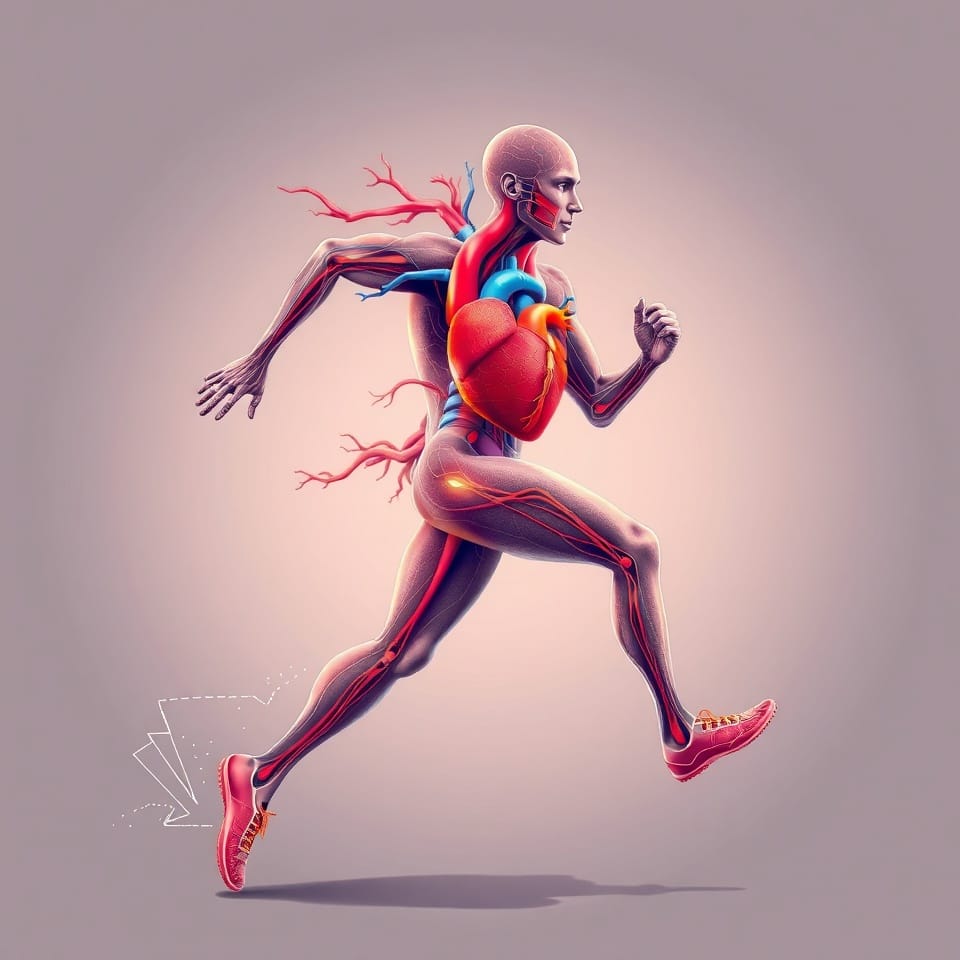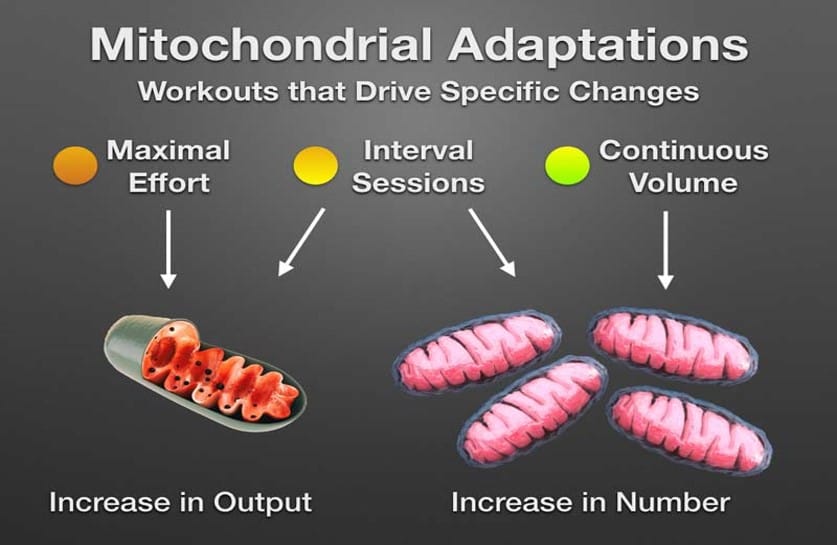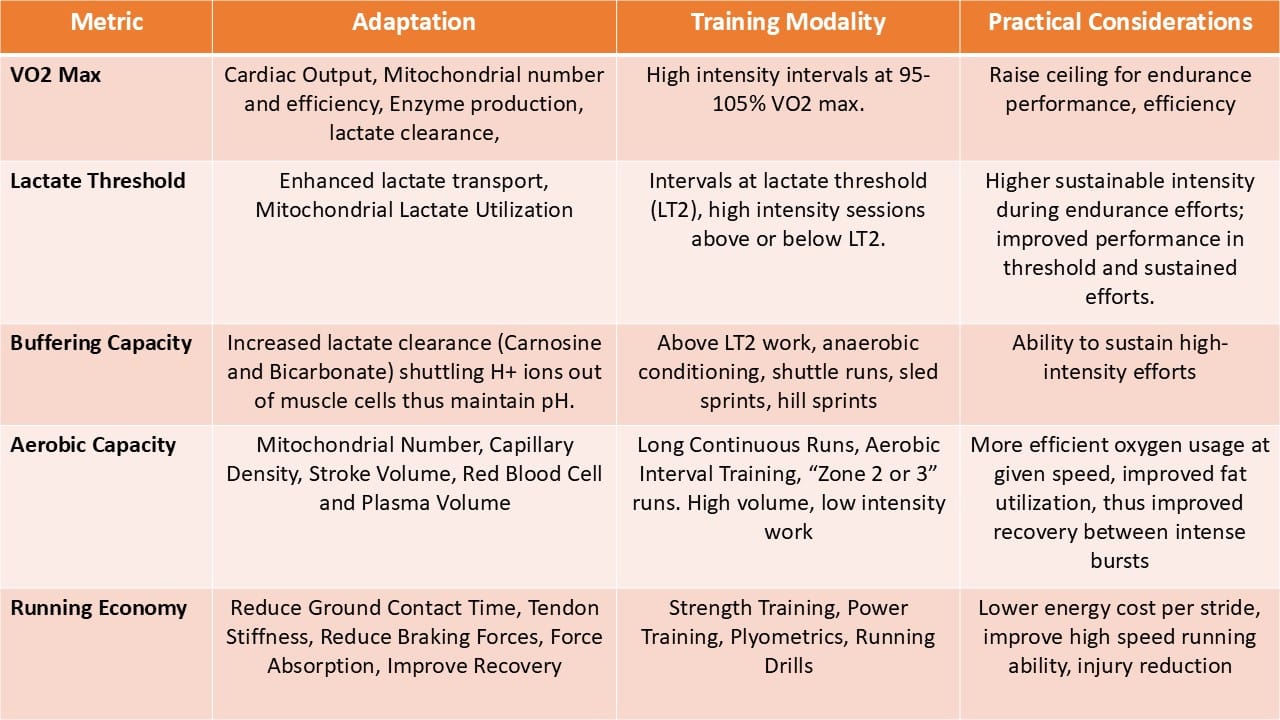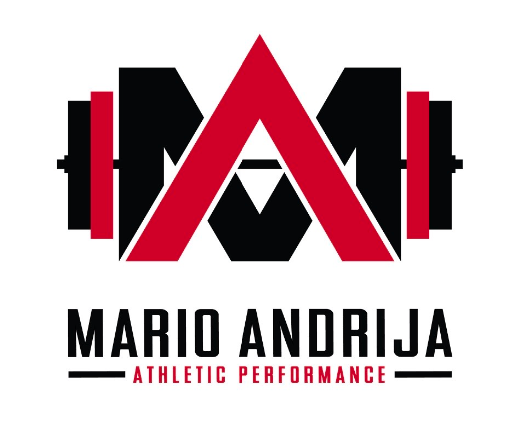How to Train for Hyrox Part 1 - Understanding Endurance Performance

With endurance sports and events such as Hyrox gaining popularity in recent years, many gym-goers have embraced endurance training, and more specifically running. As with many trends, endless advice—both correct and incorrect—floods the internet, making it confusing for those looking to improve their fitness. Often, people will follow and copy training regimens of others, taking on more than they can handle or training at a level for which they are not ready.
Therefore, this article series aims to provide a clear and succinct message to help readers understand both the WHY and HOW of optimally improving fitness for running, other sports, and Hyrox—regardless of current level.
In terms of performance, first we must define what that means in the context of an endurance event: Performance = the ability to sustain the highest average power output or speed of movement for a given distance or time. Thus, the athlete who can sustain a higher output will achieve a faster time. The ability to sustain high outputs depends on a few factors.

In the image above, we can see that endurance performance depends on a trio of systems working in harmony: aerobic, anaerobic, and neuromuscular. Training for events like Hyrox involves developing aerobic capacity, improving lactate handling, and increasing efficiency so you can sustain higher power outputs for longer.
VO2 Max and Lactate Threshold
Our aerobic capacity is determined by VO2 max—the maximum rate at which the heart, lungs, and muscles can effectively use oxygen during exercise. Think of this as the point at which your aerobic system is working at its maximum. While important, VO2 max does not by itself determine performance. If you have seen people do a running assessment with a gas mask on, this is what they are measuring.
Lactate threshold is more predictive for performance, as it marks the point during intense exercise at which lactate production in the blood exceeds the body's ability to clear it, leading to rapid accumulation and fatigue. Theoretically, if we run slower than this threshold, we should be more sustainable in a race or Hyrox event. By analyzing top performers in the Elite 15 and their training, they tend to run at paces below threshold, which suggests they are recovering at this pace between stations—still around a rapid 3:30 per kilometer pace. This highlights the need to raise your lactate threshold if you want to improve your time. Now let's take a look at chart 1 below and compare two different athletes.

In the chart above, we can see that both Athlete A and Athlete B have the same VO₂ max but different lactate thresholds. Athlete A is well-trained, with a threshold at 90% of their VO₂ max pace. They can sustain a pace of 15.3 km/h (under 4:00/km) for a prolonged period, whereas Athlete B can only sustain 12.8 km/h (4:41/km). Athlete B is less trained, with a threshold pace at 75% of their VO₂ max. Therefore, we can infer that Athlete B has significant room for improvement and should focus on raising their lactate threshold. Based on these metrics, we can strongly predict who would achieve a better result in a race.
Anaerobic endurance is also a factor in performance and dictated by buffering capacity—the ability to buffer against increased acidity in our muscles (from hydrogen ions, H+, produced during lactic acid breakdown) and to aid lactate clearance. You know that nasty acidic feeling in your legs during sleds and lunges?Being able to deal with this more effectively will help to push during stations.
Finally, running economy is key for performance: the more economical the runner, the lower the energy cost per stride due to technique, strength, and other factors. This will be the focus in part 3.
Aerobic Adaptations to Training

When it comes to aerobic training, many adaptations occur (Table 1) in order to improve performance; therefore, it is important to know which intensities target the desired adaptations. So far we have covered VO2 max and Lactate threshold, which we can target by training at these speeds; however the bulk of a training program would involve training at much lower intensities to target important aerobic system adaptations
Training below threshold or around the aerobic threshold—the exercise intensity at which blood lactate begins to rise above resting levels (often marking the transition from Zone 2 to Zone 3)—is important for a variety of adaptations. These include increased mitochondrial density, increased capillary density (delivering more oxygen to tissues), and improvements in cardiac function as measured by stroke volume, which allows us to pump more blood per heartbeat and increases cardiac output. The drop in resting heart rate over time is a common reflection of aerobic adaptation. The table below summarizes all training adaptations and how to target them for those interested.

Therefore, by training across a range of intensities, we strengthen the aerobic system through multiple pathways and should aim to target all adaptations. A complete program should consider these varying intensities and how to develop them optimally. It is important to recognize the strain higher intensities place on the body, which necessitates longer recovery periods. This is often why elite runners allocate the majority of their training to lower intensities and perform mostly “easy” work, gradually building a large aerobic engine.
Incorporating all of these components into a training plan that also includes technical work, strength training, or Hyrox-specific sessions can be challenging. Organizing these sessions optimally within a training week is both an art and a science, which we will cover in Part 2 to help you get the most out of your training.
Part 2 will include:
-Breaking down endurance sessions based on the aerobic, anaerobic and neuromuscular components.
-Understanding the "Why" behind each session and which adaptations we are targeting.
-How to organize these sessions in a training week to maximize results
-Phasic progression and periodization
For more training related content follow @coachmartu on Instagram!
